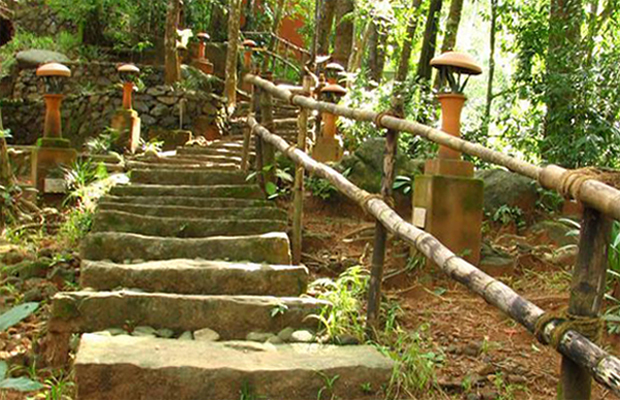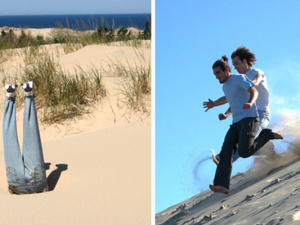
by Gary Bembridge on Google +
Imagine rush hour at a major train station in a huge city like London. Thousands of people come pouring off trains and surge towards you. They all blend into one sea of one colour and indistinct faces, they all doing the same thing and all dressed more or less the same. Very few people stand out in that surging crowd. This is exactly the problem you face as a travel blogger. There are thousands of blogs, and all are pretty much doing the same thing and look the same. To stand out in rush hour at the train station you need to be different and distinctive. To stand out in travel blogging you need to do the same.
Standing out in any crowded space is a challenge. Here are my tips on how to do that in travel blogging:
Aim to be the best travel resource, not just the best travel blog.
As someone with a marketing background, I learnt that to stand out and succeed a product has to “meet your target audience needs and wants better than your competitors or the alternatives available to them”. It is this principle that will determine if your travel blog stands out in the crowded travel content space. Travellers have a vast array of travel content sources available to them, and blogs are only one of them. To really stand out, you need to be the best resource and source in your chosen topic and area of expertise. If you are not the best resource available then you will not stand out nor will you will be sought out and recommended. To stand out, you need to aspire to be the best in your chosen topic area. If you are the best then you will stand out.
Be very specific, and not a travel generalist.
There are many general travel resources available to travellers. Major travel sites have more resources and expertise than you have. To stand out in the crowded travel content and blog space, you have to be the expert and the ultimate resource on a very specific topic. Identify a niche that you can “own” and become a recognised authority on that specific topic. You will never be able to stand out by writing about general tips on visiting a destination, but you can stand out in the clutter if you focus on writing about a very specific angle for a very specific audience. For example, if your blog focuses on “solo women vegan travellers”, you are very likely to have the most definitive content around how to explore London, Berlin or Barcelona for that audience that exists anywhere. A simple test is to complete these sentences: “Only my blog does X” or “unlike any other blog covering this topic, my blog does Y”. Use that as your blog’s promise to your readers.
Think personal “editorial” and storytelling, not facts.
To stand out you need to be unique and differentiated from everyone else writing about the same place. The reality is that there already are articles about the place you are writing about. There is no real need for any more. You can assume that there are excellent, thorough and well written articles available covering every destination. To increase your chance of standing out amongst all of that quality, you must bring something that is unique, unexpected, new and different. If someone else could have written the piece, then they probably have. If you have followed the point about defining what your specific topic and audience is then you will be a long way there, but ensure you bring an “editorial” approach to travel blogging. Always tell your personal story and perspective, and do not just give a factual account. Always ensure that your article is bringing some new narrative to the destination or place.
Write well – starting with the basics.
People like to read well written articles. If you want to stand out, you have to ensure the fundamentals of good writing are followed for every article. Because you have enthusiasm and can write does not mean you stand out. Good writing is not just about spelling and grammar, but also about having an attention grabbing opening that interests and draws people in. A narrative that will keep attention, and builds to a good ending. Online if you do not grab attention and keep it, people will move on as it is so easy to. The high rate of “bounces” for travel blogs (people visiting a site and not staying) and low amount of time spent on a page and site show this. Good, compelling and concise articles stand out. Professional journalists have copy editors that check for errors and cull unnecessary words and content. Get others to read your articles and give feedback before you post. Be very demanding of yourself. Read about good writing, go on courses and seek out good writers work.
Look good and ensure your site works well.
To stand out in a crowd you need to be well groomed and dressed appropriately. This is true for travel blogs. Your site needs to look professional and design appropriate for your audience. It needs to be easy to navigate and find content, and it needs to download fast. This is important to help ensure your content gets better treatment by search engines like Google, and helps to ensure people read your content. As more and more people are accessing and reading content on mobile devices and tablets, your site needs to be mobile friendly. It is so easy for readers to just move on, you have to look good and be easy to use.
Be topic consistent, and stay focused on your audience, not other bloggers.
No one ever won a race by following others. A common mistake that bloggers make is to focus on other blogs and in engaging with other travel bloggers, commenting on each others posts and emulating what they see. Ruthlessly focus on your audience and what they like. Talk to them on social media, arrange meet ups with a group of them and ask readers to complete surveys about what they like and what they want. To stand out you need to be user focused, not focused on what you like. If you have chosen a niche you really are deeply involved in then this will be easier. Ensure you are consistent and only write about your niche. You will not stand out and be recognised as an expert if your posts are off the focus, and you clutter the blog with off message content and sponsored guest posts.
Get trial with good search engine optimised content.
Most blogs recruit new readers from search engine traffic. This is the most important way to bring readers to your blog for the first time. You will do well in search engines if you follow the rules about standing out above, and with the use of search engine optimisation like using keywords and getting other sites linking to your content. You need to spend time understanding SEO (search engine optimisation). However, see search engines as the key source of recruiting people to your site. As people use search engines to find information, you need some select core “evergreen” content with ultimate tips and core information for your niche. Have these posts, but do not then focus every article on this approach – as what you need is loyal fans that keep coming back.
Build loyalty and fans through a call to action to sign up for your newsletter.
Once you drive people to your site through the good core information on your chosen niche, you need to convert them into fans. Make sure you have a call to action on that information content to get them to sign up to a newsletter. Use your newsletter to share new articles and promote popular stories. Most people that sign up will likely read over 75% of all your articles. To stand out in the crowded space you should build a mailing list, to ensure that your content constantly gets into the hands of people who are interested in your topic area.
Promote yourself, both online and offline – but focus on where you know your audience is.
Do not spread the promotion of your blog too thinly across lots of mechanisms. The key is to find out and know where your target audience are and what they are using. To stand out you want to be active where your audience is most active and engaged. You are not going to stand out by trying to be active on every social media platform. Most travel bloggers are using Twitter and Facebook, and so there is a lot of noise and clutter, and you are trying to stand out in a noisy and crowded space. Start by understanding where your target is, and especially what they are doing off-line. Travel bloggers that have seen dramatic shifts in readership and followers it has usually come from traditional media coverage, for example being interviewed for an article in a newspaper, magazine or TV and Radio, or through actively engaging with their community in the real world.
Back to Travel Blogger University











